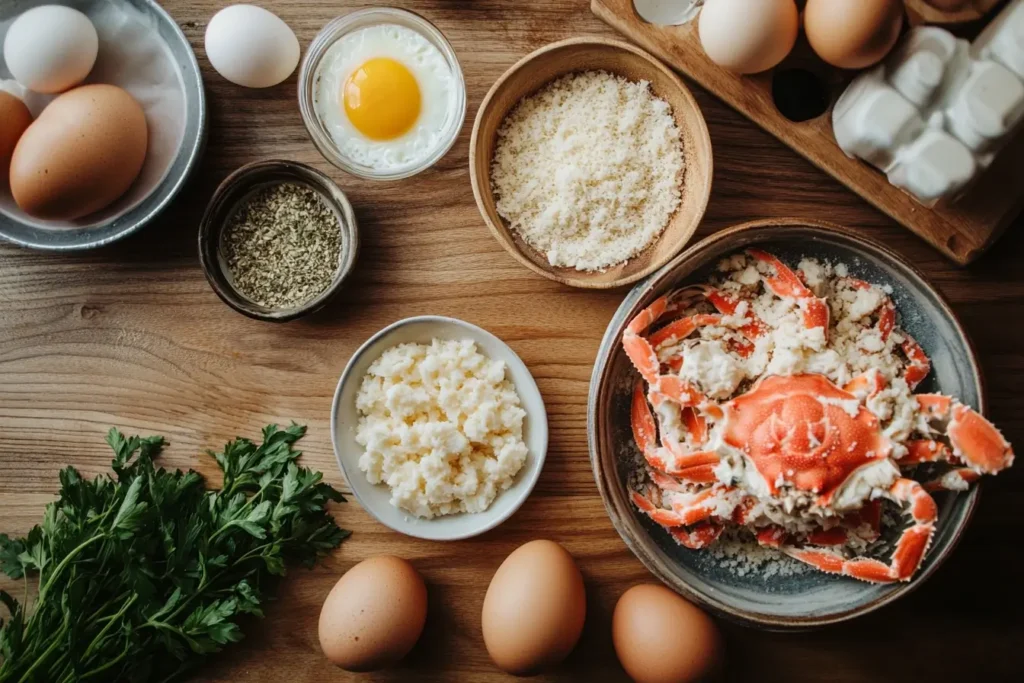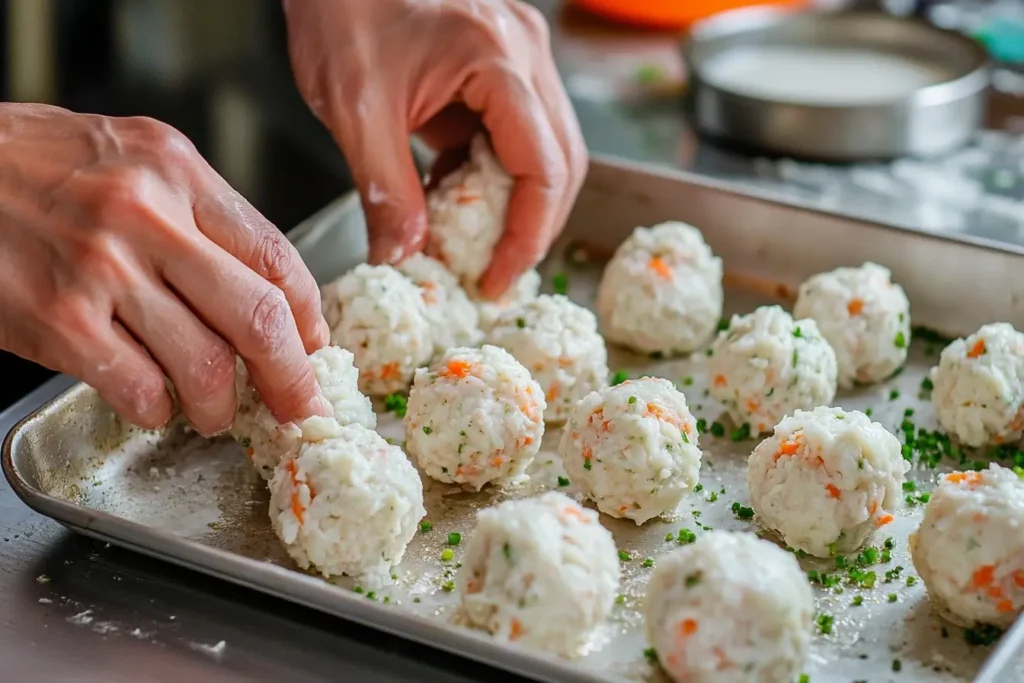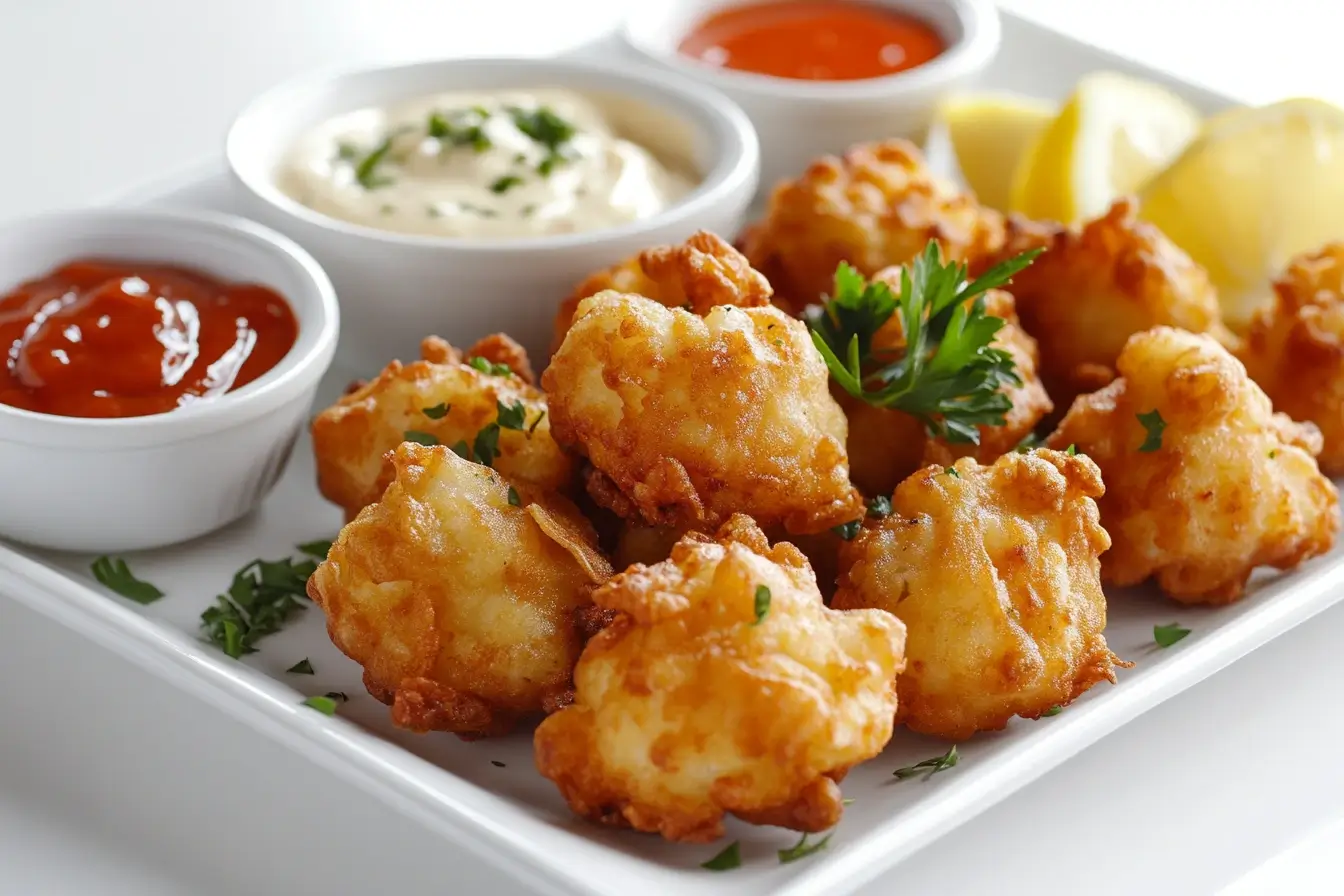Seafood lovers rejoice! If you’ve been searching for the best crab balls recipe, look no further. This guide will walk you through everything you need to know, from selecting the freshest ingredients to mastering cooking techniques. Whether you’re a beginner or a seasoned chef, this recipe is designed to deliver perfectly crispy, flavorful crab balls every time.
What Are Crab Balls?
Overview of Crab Balls and Their Popularity
Crab balls are a classic seafood appetizer and a highlight of any best crab balls recipe. They’re bite-sized, packed with flavor, and incredibly versatile. These crispy morsels make an excellent finger food for parties or a delightful snack for seafood enthusiasts.
Origins of Crab Balls: A Brief History
The best crab balls recipes originated in coastal regions where crabs were abundant. In places like Maryland, known for its blue crabs, these appetizers have become a signature dish. Over time, recipes have evolved to include unique variations while keeping crab meat as the star ingredient.
How Crab Balls Differ from Other Seafood Appetizers
The key to the best crab balls recipe lies in their balance of flavors and textures. Compared to crab cakes, crab balls are smaller, making them ideal for casual gatherings or elegant hors d’oeuvres. Unlike other seafood appetizers, crab balls offer a crispy exterior that contrasts beautifully with their tender, flavorful interior.
Ingredients for the Best Crab Balls Recipe

Crafting the best crab balls recipe undoubtedly starts with high-quality ingredients. From fresh crab meat to optional add-ins, every element plays a crucial role in creating the perfect balance of flavor and texture.
Primary Ingredients: Fresh Crab Meat and Seasonings
First and foremost, the foundation of the best crab balls recipe is fresh crab meat. When combined with seasonings like Old Bay, garlic powder, and onion powder, these ingredients work together to enhance the natural sweetness of the crab. Additionally, a mixture of breadcrumbs, eggs, and mayonnaise not only binds the batter together but also ensures the ideal texture for shaping and cooking.
Optional Add-Ins for Unique Flavors
Make your version of the best crab balls recipe unique by experimenting with optional ingredients like shredded cheese, fresh herbs, or a dash of cayenne pepper for heat. These add-ins allow for endless customization while keeping the dish exciting.
Choosing the Best Crab Meat
For authentic flavor, fresh or lump crab meat is recommended in any best crab balls recipe. If fresh isn’t available, high-quality canned crab meat is an excellent substitute. Avoid imitation crab meat for this dish, as it lacks the authentic taste needed for the recipe to shine.
Step-by-Step Instructions for the Best Crab Balls Recipe

This section provides detailed steps to ensure your best crab balls recipe turns out perfectly every time. By following these instructions carefully, you can achieve consistent and delicious results.
1. Preparing the Ingredients
To begin, start by thoroughly cleaning and picking through the crab meat to remove any shells or debris. Additionally, dice any extra ingredients, such as herbs or peppers, to blend seamlessly into the batter. This preparation step is essential for ensuring a smooth texture and balanced flavors in the final dish.
2. Mixing the Batter
Next, in a large mixing bowl, gently combine the crab meat with breadcrumbs, seasonings, and binders like eggs and mayonnaise. Moreover, it’s important to mix the ingredients carefully to avoid breaking down the delicate crab meat. The batter for the best crab balls recipe should be moist yet firm enough to hold its shape, ensuring that the crab balls remain intact during cooking.
3. Shaping the Crab Balls
Use a scoop or tablespoon to form evenly sized balls. Chill them for at least 20 minutes before cooking to ensure they hold their shape.
4. Cooking Methods
To complete the best crab balls recipe, choose from these methods:
- Frying: Results in the crispiest texture and golden-brown color.
- Baking: A healthier option that still delivers a satisfying crunch.
- Air Frying: Combines health benefits with the crispy exterior expected from fried crab balls.
Tips for Perfecting the Best Crab Balls Recipe
To ensure your crab balls turn out perfectly every time, it’s essential to focus on technique. Here are some expert tips to help you achieve the ideal flavor, texture, and presentation.
1. Maintaining the Right Consistency for the Batter
The key to great crab balls lies in the batter’s consistency. It should be moist enough to hold together but not so wet that it falls apart during cooking. If your mixture feels too loose, add breadcrumbs gradually until it firms up. If it feels dry, incorporate a small amount of mayonnaise, milk, or even a touch of beaten egg to restore moisture. Consistency is especially critical when frying, as loose batter can lead to uneven cooking.
2. How to Prevent Crab Balls from Falling Apart
Chilling the shaped crab balls before cooking is a simple but effective way to ensure they hold their shape. Refrigerate the prepared balls for 15–30 minutes before frying, baking, or air frying. Additionally, handle them gently while shaping and cooking to prevent them from breaking apart.
Another common mistake is using too much filler (like breadcrumbs) in the batter, which can dilute the crab’s flavor and make the balls crumbly. Aim for a balance where the crab meat remains the star of the dish.
3. Best Oils and Frying Techniques for Crispiness
If you choose to fry your crab balls, the type of oil you use matters. Neutral oils with a high smoke point, such as vegetable oil, canola oil, or peanut oil, are ideal. They allow the crab balls to cook evenly without imparting unwanted flavors.
Ensure the oil is preheated to 350°F (175°C) before adding the crab balls. If the oil is too cool, the balls will absorb excess grease, making them soggy. Conversely, oil that is too hot can cause the exterior to brown too quickly while leaving the inside undercooked.
When frying, avoid overcrowding the pan, as this can lower the oil temperature and result in uneven cooking. Cook in small batches, and allow the oil to return to the correct temperature between batches for consistent results.
4. Enhancing Crispiness Without Frying
For those who prefer healthier options, you can still achieve a crisp texture when baking or air frying. Lightly coating the crab balls with cooking spray or brushing them with oil before cooking can replicate the golden-brown crust of frying.
Equipment You’ll Need
Preparing crab balls doesn’t require a professional kitchen, but having the right tools can make the process smoother and more efficient. Here’s a rundown of the essential equipment and alternatives to deep frying for a healthier cooking approach.
1. Essential Tools: Mixing Bowls, Spoons, and Frying Pans
- Mixing Bowls: Use a large mixing bowl to combine the ingredients for your crab ball batter. Having a smaller bowl for mixing sauces or seasonings can also come in handy.
- Spoons or Spatulas: A sturdy spoon or spatula is essential for folding ingredients into the batter without breaking the crab meat. Opt for silicone or wooden tools to avoid damaging your mixing bowl.
- Frying Pan or Skillet: If you’re frying your crab balls, a heavy-bottomed frying pan or skillet is ideal for even heat distribution. Make sure it’s large enough to fry multiple crab balls at once without overcrowding.
2. Alternatives to Deep Frying
For those seeking healthier or less messy options, modern kitchen appliances offer great alternatives:
- Air Fryer: This appliance has become a favorite for creating crispy dishes with minimal oil. It’s perfect for crab balls and requires only a light spray of oil for a golden-brown crust.
- Oven: Baking is another excellent alternative to deep frying. A baking sheet lined with parchment paper or a non-stick mat ensures easy cleanup and prevents sticking. Using a wire rack placed over the baking sheet allows air to circulate, ensuring even browning.
- Dutch Oven: For those who prefer frying but want to minimize splatter, a Dutch oven is a great choice. Its high sides contain oil splashes, making cleanup easier.
3. Additional Handy Equipment
- Ice Cream Scoop: A small scoop ensures uniform portions, making it easy to shape evenly sized crab balls.
- Tongs or Slotted Spoon: Essential for safely handling crab balls when frying, these tools allow you to retrieve them from hot oil without risking burns.
- Cooling Rack: After frying, placing crab balls on a cooling rack rather than a paper towel helps maintain their crispiness by allowing excess oil to drain away.
Having these tools on hand will streamline your cooking process and ensure professional-quality results every time.
Variations and Serving Suggestions
Crab balls are incredibly versatile, allowing you to experiment with flavors and serving styles. Whether you’re looking to spice things up, cater to dietary restrictions, or elevate your presentation, this section covers creative variations and serving ideas.
1. Spicy Crab Balls: Adding Heat with Chili or Cayenne
For those who enjoy a kick of heat, spicy crab balls are undoubtedly a fantastic option. To achieve this bold flavor, you can add ingredients such as finely chopped chili peppers, a pinch of cayenne pepper, or even a dash of hot sauce to the batter. Furthermore, if you prefer a smoky undertone, smoked paprika serves as an excellent addition to elevate the taste. Additionally, to create a balanced flavor profile, pair these spicy crab balls with a cooling dipping sauce like ranch or tzatziki. This combination not only complements the spice but also enhances the overall dining experience.
2. Gluten-Free Crab Balls: Substituting Breadcrumbs
Catering to gluten-free diets is simple with the right substitutions. Instead of traditional breadcrumbs, use gluten-free alternatives such as almond flour, crushed rice crackers, or gluten-free panko. These options maintain the texture while ensuring the dish is suitable for those with gluten sensitivities.
For added flavor, incorporate a touch of ground flaxseed or grated Parmesan cheese as part of the binder.
3. Serving Ideas: Dipping Sauces, Side Dishes, and Pairings
Crab balls shine when paired with complementary sauces and sides. Here are some serving ideas to elevate your dish:
- Dipping Sauces: Classic tartar sauce, cocktail sauce, or garlic aioli are always crowd-pleasers. For a more adventurous twist, try a sweet-and-spicy mango chutney or a sriracha-lime mayo.
- Side Dishes: Serve crab balls alongside a fresh green salad, coleslaw, or roasted vegetables for a well-rounded meal. A side of seasoned fries or onion rings adds a touch of indulgence.
- Pairings: Crab balls pair beautifully with crisp white wines like Sauvignon Blanc or sparkling beverages such as prosecco. For a casual option, a light beer or lemonade complements their flavors.
To impress your guests, start by arranging the crab balls on a serving platter with a variety of dipping sauces in small bowls. Additionally, garnish the platter with fresh herbs like parsley or cilantro to add a pop of color. Moreover, for a festive touch, consider skewering the crab balls with toothpicks, which not only makes them easier to serve but also presents them as elegant hors d’oeuvres. This simple yet thoughtful presentation will elevate the dish and make it the highlight of your event.
Common Mistakes to Avoid
Even with a straightforward recipe, a few missteps can impact the texture, flavor, and overall success of your crab balls. Avoid these common mistakes to ensure your dish is flawless every time.
1. Overmixing the Batter: Why It Matters
One of the most frequent mistakes when making crab balls is overmixing the batter. Excessive mixing can break down the crab meat, resulting in a mushy texture instead of the desired flaky consistency. To prevent this, fold the ingredients together gently, just until combined. The goal is to preserve the delicate texture of the crab meat.
2. Using Low-Quality Crab Meat: How It Impacts Flavor
The quality of your crab meat directly affects the flavor of the final dish. Low-quality crab meat, such as heavily processed or imitation varieties, can taste bland and lack the rich, sweet flavor that makes crab balls irresistible. Always opt for fresh or high-quality canned crab meat when possible. If fresh crab is unavailable, lump crab meat from a trusted brand is a reliable alternative.
3. Not Seasoning Adequately: Balancing Flavors
Underseasoned crab balls can taste flat, while overly seasoned ones can overpower the natural sweetness of the crab. Achieving the right balance is essential. Season the batter with a blend of salt, pepper, and seafood-friendly spices like Old Bay or paprika. Taste-test the batter before shaping the crab balls, adjusting the seasoning as needed.
4. Skipping the Chilling Step
Skipping the step of chilling the shaped crab balls can lead to them falling apart during cooking. The chilling process helps firm up the batter, making it easier to handle and ensuring the balls hold their shape while frying, baking, or air frying. Allocate at least 15–30 minutes for refrigeration before cooking.
5. Overcrowding the Pan When Frying
If you’re frying crab balls, avoid overcrowding the pan. Adding too many at once can lower the oil temperature, resulting in uneven cooking and soggy crab balls. Fry in small batches, allowing sufficient space between each ball for proper heat circulation.
6. Neglecting the Oil Temperature
Oil that’s too cool or too hot can ruin the cooking process. Use a thermometer to maintain the oil temperature at 350°F (175°C). If you don’t have a thermometer, test the oil by dropping in a small piece of batter; it should sizzle immediately but not burn.
By avoiding these mistakes, you’ll be able to create crab balls that are perfectly crispy, flavorful, and satisfying.
Storing and Reheating Crab Balls
Proper storage and reheating methods are essential for preserving the flavor, texture, and safety of crab balls. Whether you have leftovers or are preparing them in advance, follow these guidelines to keep them fresh and delicious.
1. Proper Storage Methods: Refrigeration and Freezing
- Refrigeration: If you plan to eat the crab balls within a few days, store them in an airtight container in the refrigerator. Line the container with a paper towel to absorb any excess moisture and maintain crispiness. Consume refrigerated crab balls within 3–4 days for the best flavor.
- Freezing: For longer storage, crab balls can be frozen. Arrange them in a single layer on a baking sheet and freeze until solid. Once frozen, transfer the crab balls to a freezer-safe bag or container, removing as much air as possible to prevent freezer burn. They can be stored in the freezer for up to 3 months.
2. Reheating Tips for Maintaining Crispiness and Flavor
The key to reheating crab balls is preserving their crispy exterior and moist interior. Here are the best methods:
- Oven: Preheat the oven to 375°F (190°C). Place the crab balls on a wire rack over a baking sheet to allow heat to circulate evenly. Heat for 10–12 minutes, flipping halfway through, until warmed and crisp.
- Air Fryer: Preheat the air fryer to 350°F (175°C). Arrange the crab balls in a single layer in the basket and heat for 5–7 minutes, shaking the basket halfway through. This method quickly restores their crispy texture.
- Stovetop: Heat a small amount of oil in a skillet over medium heat. Add the crab balls and cook for 2–3 minutes on each side, ensuring they heat evenly without becoming greasy.
- Microwave (Not Recommended): While convenient, microwaving can make crab balls soggy and rubbery. If you must use this method, place a damp paper towel over the crab balls to retain some moisture and heat in short bursts.
3. Tips for Freezing and Reheating Uncooked Crab Balls
If you’re preparing crab balls ahead of time, consider freezing them uncooked. Shape the batter into balls, arrange them on a parchment-lined tray, and freeze. When ready to cook, there’s no need to thaw; simply bake, fry, or air fry them directly from frozen, adding a few extra minutes to the cooking time.
By following these storage and reheating tips, your crab balls will retain their delicious flavor and texture, no matter when you enjoy them.
Nutritional Information
Understanding the nutritional profile of crab balls can help you make informed decisions about portion sizes and ingredient substitutions. Whether you’re indulging or modifying the recipe to suit dietary preferences, here’s what you need to know.
1. Calories and Macronutrients per Serving
A typical serving of crab balls (about 3–4 medium-sized pieces) contains the following:
- Calories: Approximately 150–200, depending on the cooking method (baking or air frying will have fewer calories than deep frying).
- Protein: Crab meat is a rich source of protein, with each serving offering about 12–15 grams.
- Fat: The fat content varies depending on the amount of mayonnaise, cheese, and frying oil used, typically ranging between 7–10 grams per serving.
- Carbohydrates: Breadcrumbs and seasonings contribute about 10–12 grams of carbohydrates per serving. Using gluten-free or alternative binders may slightly reduce this value.
2. Adjusting Ingredients for Dietary Preferences or Restrictions
- Low-Calorie Options: To reduce calories, bake or air fry the crab balls instead of deep frying. Opt for light mayonnaise or Greek yogurt as a binder.
- High-Protein Modifications: Increase protein content by adding a bit of shredded cheese or incorporating egg whites into the batter.
- Low-Carb Adjustments: For a keto-friendly version, replace breadcrumbs with almond flour or crushed pork rinds.
- Dairy-Free Substitutions: Use vegan mayonnaise and skip any cheese if you’re avoiding dairy. Substitute regular milk with almond or soy milk if needed.
- Sodium Control: Store-bought seasonings like Old Bay can be high in sodium. Opt for low-sodium varieties or create a custom spice blend to control salt levels.
3. Health Benefits of Crab Meat
Crab meat is not only delicious but also nutritious. It’s an excellent source of lean protein, essential for muscle maintenance and repair. It’s also rich in vitamins and minerals such as vitamin B12, zinc, and selenium, which support energy production, immune function, and overall health. Additionally, crab meat is low in fat and contains heart-healthy omega-3 fatty acids.
By balancing the ingredients and cooking methods, crab balls can be a tasty addition to a health-conscious diet.
FAQs About the Best Crab Balls Recipe
Here are answers to some common questions about making, serving, and cooking crab balls. These tips will help you refine your recipe and troubleshoot common issues.
1. Is it better to fry or bake crab cakes?
The choice between frying and baking crab cakes—or crab balls—depends on your preferences:
- Frying: Produces a crisp, golden-brown crust and a rich, indulgent flavor. However, it requires more oil and adds extra calories.
- Baking: A healthier option with less oil, baking still delivers a slightly crispy exterior, especially when the crab balls are lightly brushed with oil or sprayed with cooking spray. It’s also more hands-off, as the oven does most of the work.
2. What do you eat with crab balls?
Crab balls pair beautifully with a variety of sides and sauces. Popular options include:
- Dipping Sauces: Tartar sauce, cocktail sauce, garlic aioli, or sweet chili sauce.
- Side Dishes: Fresh salads, coleslaw, or roasted vegetables complement the flavors. For a heartier meal, pair with seasoned fries, cornbread, or rice pilaf.
- Beverages: Serve with white wine, sparkling water, or light beer for a refreshing pairing.
3. Why do you soak crabs in milk?
Soaking crab meat in milk is a culinary trick that enhances flavor and texture. The milk helps neutralize any fishy odor or taste, leaving the meat sweeter and fresher. It also softens the meat slightly, making it easier to incorporate into recipes. To soak crab meat, submerge it in milk for 20–30 minutes, then drain and pat dry before using.
4. How do you cook frozen crab balls?
Cooking frozen crab balls is simple and convenient, as there’s no need to thaw them beforehand. Here are some methods:
- Baking: Preheat your oven to 375°F (190°C). Place the frozen crab balls on a parchment-lined baking sheet and bake for 20–25 minutes, flipping halfway through.
- Air Frying: Preheat the air fryer to 375°F (190°C). Arrange the frozen crab balls in a single layer and cook for 12–15 minutes, shaking the basket occasionally for even browning.
- Frying: Heat oil to 350°F (175°C) and fry the frozen crab balls in small batches for 4–5 minutes until golden and crispy.
Each method ensures delicious results, making frozen crab balls a convenient option for busy days.
Conclusion
Crab balls are a delightful appetizer that combines the sweet, delicate flavor of crab with the perfect blend of seasonings and textures. From their origins in coastal regions to their place on modern menus, crab balls have become a beloved dish that’s both versatile and crowd-pleasing.
By following this guide, you’ve learned everything from selecting the best ingredients and mastering cooking techniques to exploring creative variations and avoiding common pitfalls. Whether you’re frying them for a crispy indulgence or baking them for a lighter treat, crab balls are a dish that can be tailored to suit any occasion or preference.
Don’t hesitate to experiment with flavors and pairings. Add a spicy twist, try a gluten-free version, or serve them with unique dipping sauces to make the recipe your own. Most importantly, share this delicious creation with friends and family, turning every bite into a celebration of flavor.
Now it’s your turn to bring this recipe to life. Happy cooking!
Explore More Delicious Recipes
Love seafood-inspired dishes? These recipes are perfect for adding variety to your seafood repertoire:
- Irresistible Crab Brulee Recipe – A luxurious and creamy take on crab.
- Seared Ahi Tuna Recipe – A gourmet seafood dish with a touch of elegance.
- Authentic Chilean Papas Rellenas Recipe – A savory and satisfying stuffed dish to enjoy.

